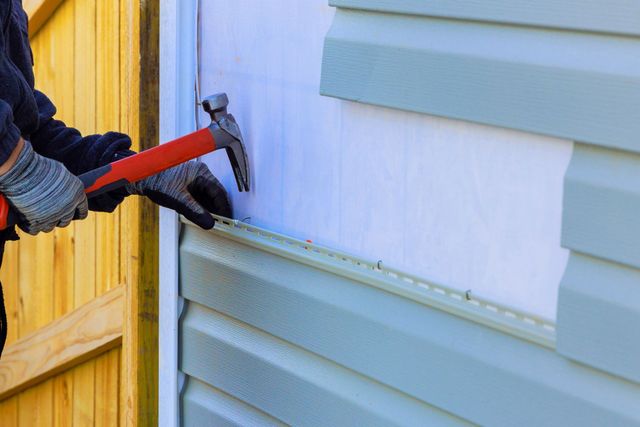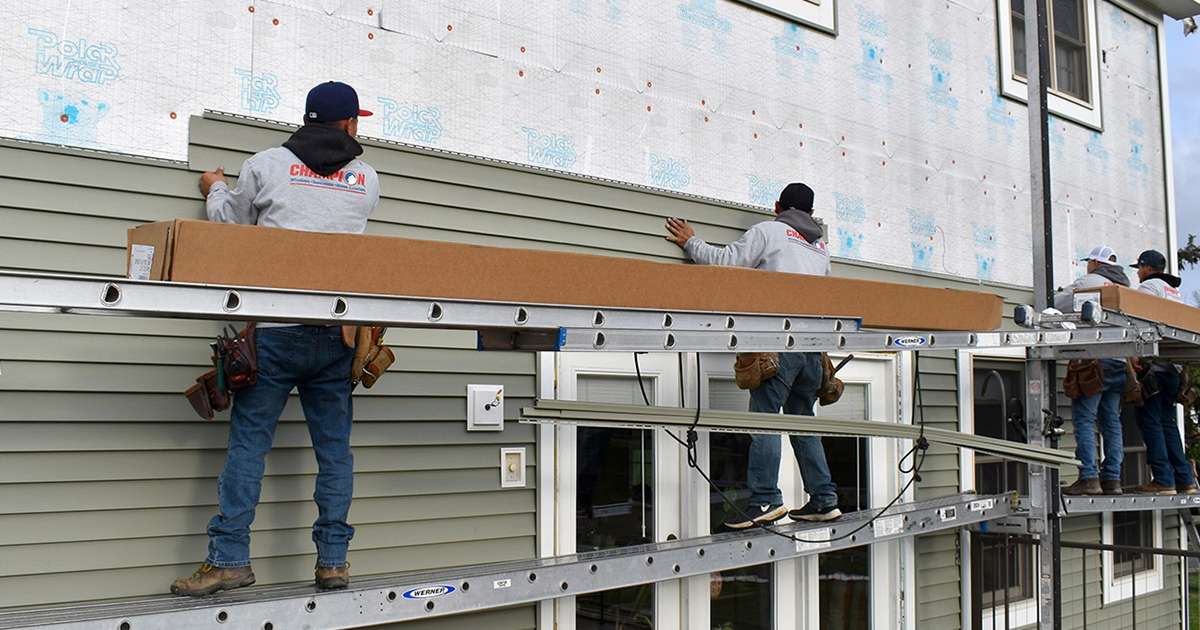Reliable Morris Siding Contractor Specializing in Residential Siding Projects
The Necessary Guide to the Different Kinds of Home Siding and Their Unique Benefits
In the realm of home renovation, selecting the ideal siding is a critical decision that influences both aesthetic charm and useful performance. The range of products offered, such as timber, vinyl, fiber block, steel, and cement, each offer distinct advantages that accommodate different requirements and choices. Understanding these distinctions can significantly improve the longevity and value of a residential or commercial property - morris siding contractor. Nonetheless, with numerous options to take into consideration, which siding material really sticks out for your details task? Discovering these choices can lead to informed decisions that align with both design and functionality.
Timber Exterior Siding
Wood home siding, a preferred selection for residential exteriors, provides a timeless aesthetic that incorporates natural elegance with architectural honesty. This siding product is offered in various designs, consisting of clapboard, shingles, and board-and-batten, permitting home owners to personalize their façade to match their design choices. Timber exterior siding is typically crafted from durable varieties such as cedar, redwood, or yearn, which are recognized for their durability and ability to stand up to environmental stress factors.
One of the key advantages of timber home siding is its exceptional insulation residential or commercial properties, which can add to energy performance and lower home heating costs. Additionally, timber exterior siding is eco-friendly, making it an eco-friendly choice when sourced sustainably. Normal upkeep, including paint or discoloration, can prolong its life-span and enhance its appearance, enabling homeowners to protect the all-natural charm of the wood.
Nonetheless, potential drawbacks consist of susceptibility to insects, rot, and climate damage, requiring appropriate therapy and maintenance - morris siding contractor. In spite of these problems, when appropriately looked after, wood home siding can offer a durable and stunning option that boosts the personality of a home while using a cozy, welcoming atmosphere

Plastic Home Siding
Vinyl house siding has actually emerged as a leading selection for home owners looking for a low-maintenance exterior choice that integrates longevity and affordability. This versatile material is crafted from polyvinyl chloride (PVC), making it immune to different weather, consisting of wetness and UV rays. Therefore, vinyl siding does not warp, rot, or discolor, making certain durable aesthetic allure.
One of the main advantages of vinyl siding is its considerable variety of shades and styles, allowing house owners to achieve the preferred search for their property without the need for regular repainting. In addition, plastic exterior siding is simple to set up, which can substantially minimize labor prices during building or renovation projects.
Plastic house siding also adds to energy effectiveness. Many options function insulation support, which boosts thermal efficiency, aiding to maintain comfy interior temperature levels and possibly lowering energy bills. Additionally, its smooth surface area facilitates easy cleaning, requiring only periodic washing with a garden hose pipe to eliminate dirt and debris.
Fiber Cement House Siding
Fiber concrete house siding has actually gotten grip among house owners and home builders alike because of its impressive combination of resilience and aesthetic versatility. Made up of a mixture of cellulose, sand, and cement fibers, this exterior siding option is engineered to withstand extreme climate condition, including high winds, heavy rainfall, and temperature level variations, making it a resilient option for domestic exteriors.

Among the main advantages of fiber cement siding is its resistance to parasites, such as termites, and its non-combustible nature, offering improved fire safety and security. morris siding contractor. Furthermore, it is readily available in a large selection of styles, colors, and appearances, allowing homeowners to accomplish their wanted aesthetic without compromising efficiency
An additional advantage is its low upkeep demands; fiber concrete exterior siding generally needs paint or discoloration every 5-10 years, which is less regular than various other products. Furthermore, its longevity adds to a reduced general price of possession, as it decreases the requirement for regular fixings or sites substitutes.
Inevitably, fiber concrete siding represents an outstanding investment for those seeking a resistant, attractive, and versatile exterior option, combining both form and feature to boost the home's aesthetic charm.
Steel Exterior Siding
The attraction of steel house siding depends on its robust longevity and modern-day visual charm, making it a preferred option for contemporary style. Readily available in products such as light weight aluminum and steel, metal exterior siding provides a variety of finishes and colors, enabling property owners to achieve a personalized appearance that matches their layout vision.

Energy effectiveness is another substantial advantage, as many metal siding products are designed with insulation options that help regulate indoor temperatures. our website This can lead to reduced energy prices over time. Additionally, metal exterior siding is usually recyclable, making it an eco-friendly selection for sustainability-minded home owners.
The installment procedure for metal home siding can be fairly simple, leading to a quicker turnaround time for building and construction tasks. Generally, metal exterior siding combines functionality and design, making it a functional alternative for those looking for a visually attractive and enduring outside surface.
Brick and Rock Home Siding
Brick and rock home siding sticks out as an ageless choice that boosts the aesthetic charm of any kind of home. Understood for their toughness and low upkeep, these products offer a phenomenal return on financial investment while elevating the home's curb allure. Offered in various shades, textures, and patterns, block and stone can be customized to suit varied architectural designs, from conventional to modern.
One of the main benefits of block and stone exterior siding is their power efficiency. Both materials have all-natural protecting properties that help control indoor temperature levels, possibly reducing home heating and cooling expenses. Furthermore, they use superior fire resistance compared to various other home siding options, adding to boosted safety and security.
One more benefit is their longevity. Brick and stone can last for years, typically requiring marginal upkeep beyond occasional cleansing. Unlike timber siding, they are resistant to pests and rot, making certain a long-lasting outside that withstands the components.
Verdict
In summary, the selection of home siding substantially impacts a home's visual appeal, power effectiveness, and maintenance needs. Each type of house siding-- whether timber, vinyl, fiber metal, concrete, or brick and stone-- uses one-of-a-kind benefits tailored to numerous homeowner preferences and environmental problems.
One of the key advantages of wood house siding is its exceptional insulation homes, which can contribute to energy effectiveness and reduced heating prices. Furthermore, timber siding is eco-friendly, making it an environmentally pleasant choice when sourced sustainably.One of the primary advantages of steel home siding is its resistance to numerous environmental variables.Power effectiveness is an additional substantial benefit, as several steel siding items are designed with insulation alternatives that help control indoor temperature levels. Each click for source type of siding-- whether timber, vinyl, fiber cement, metal, or brick and stone-- provides distinct benefits customized to numerous home owner choices and environmental problems.